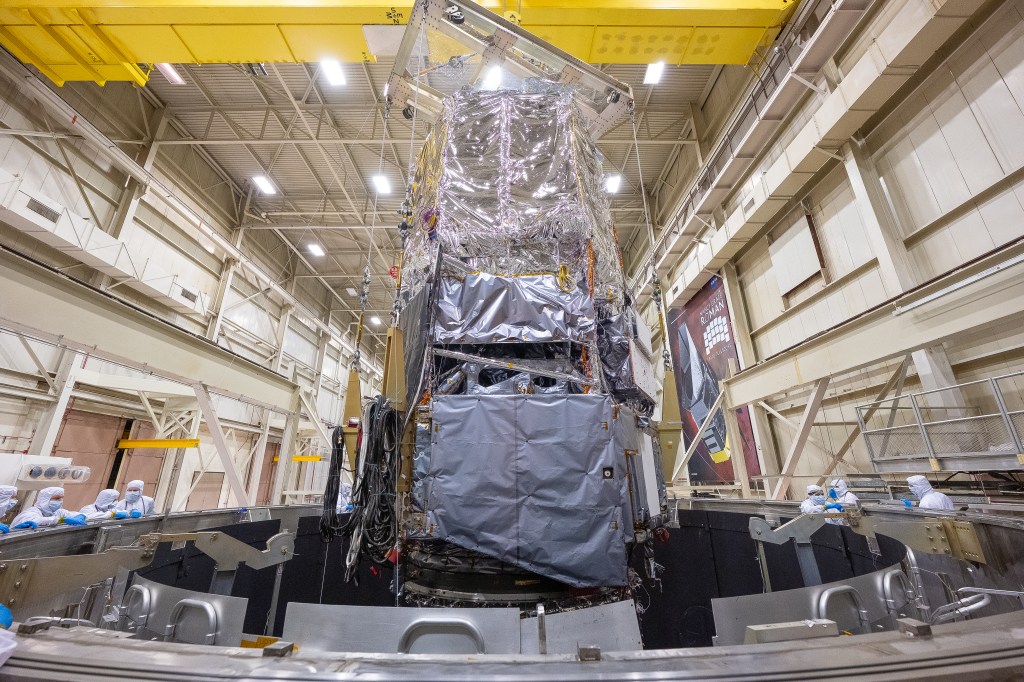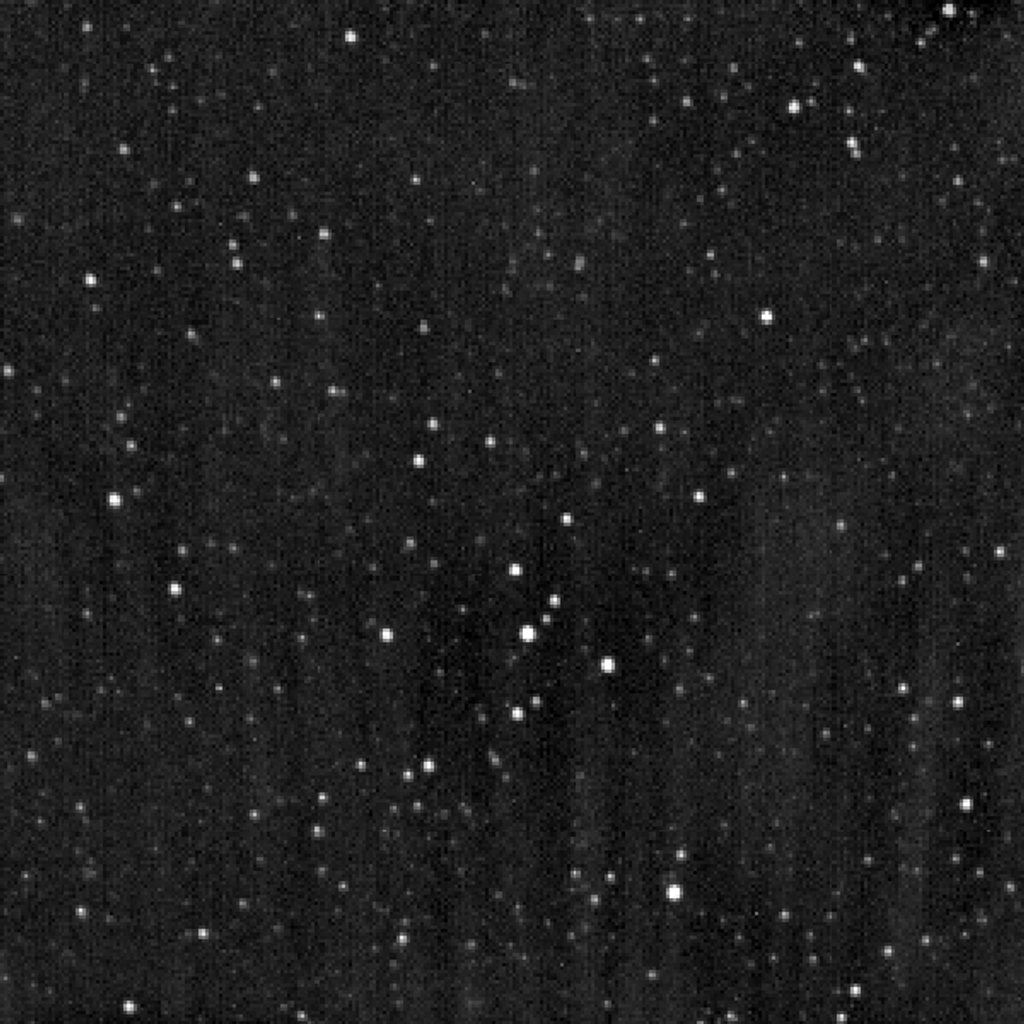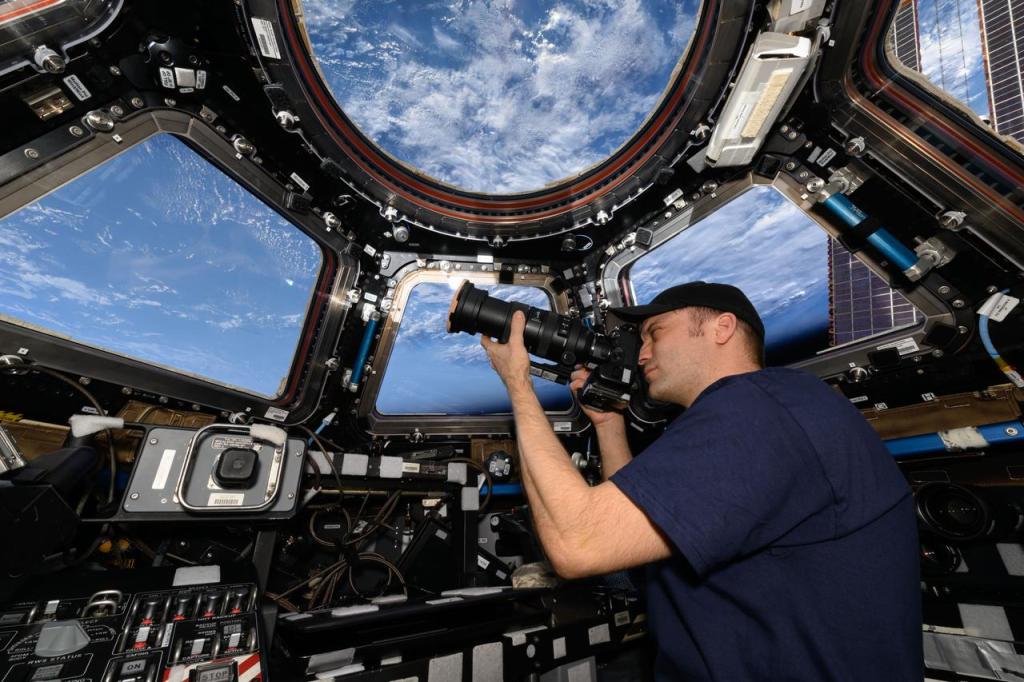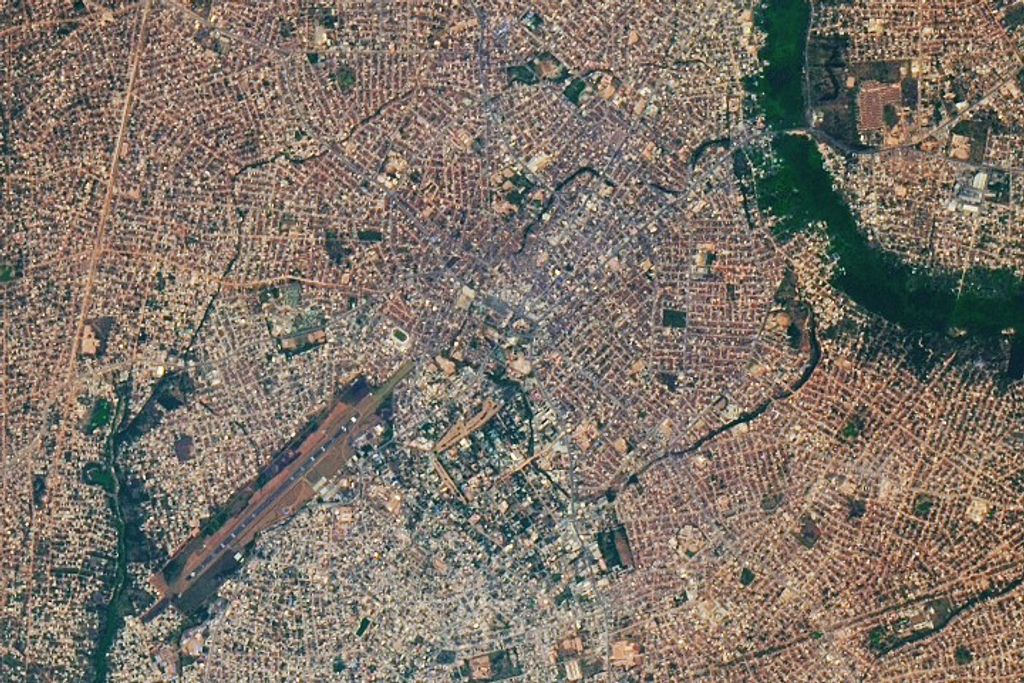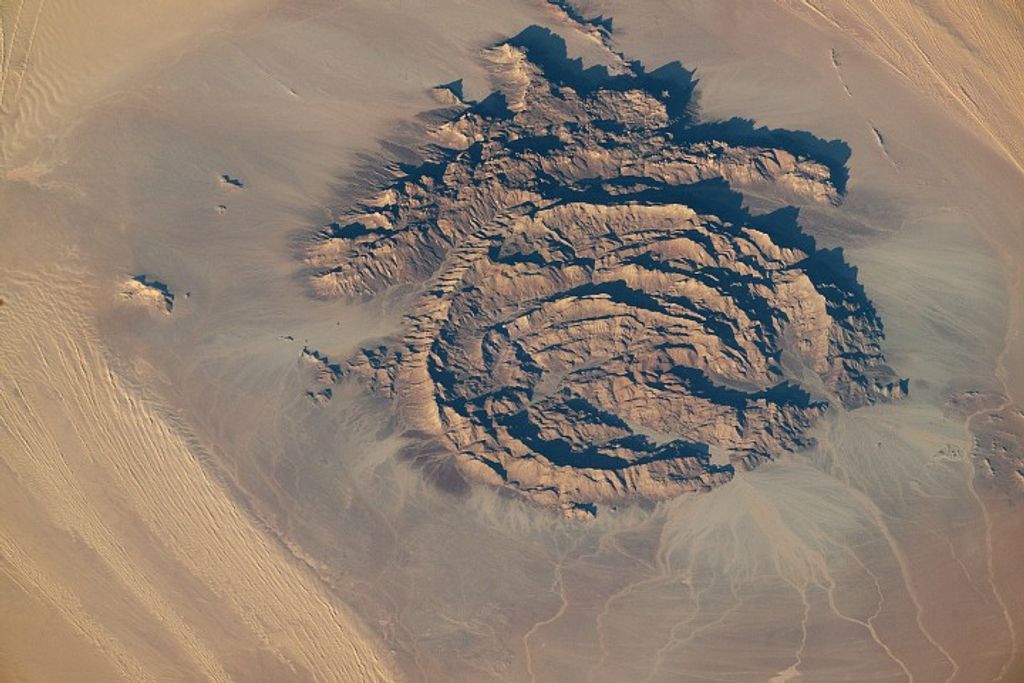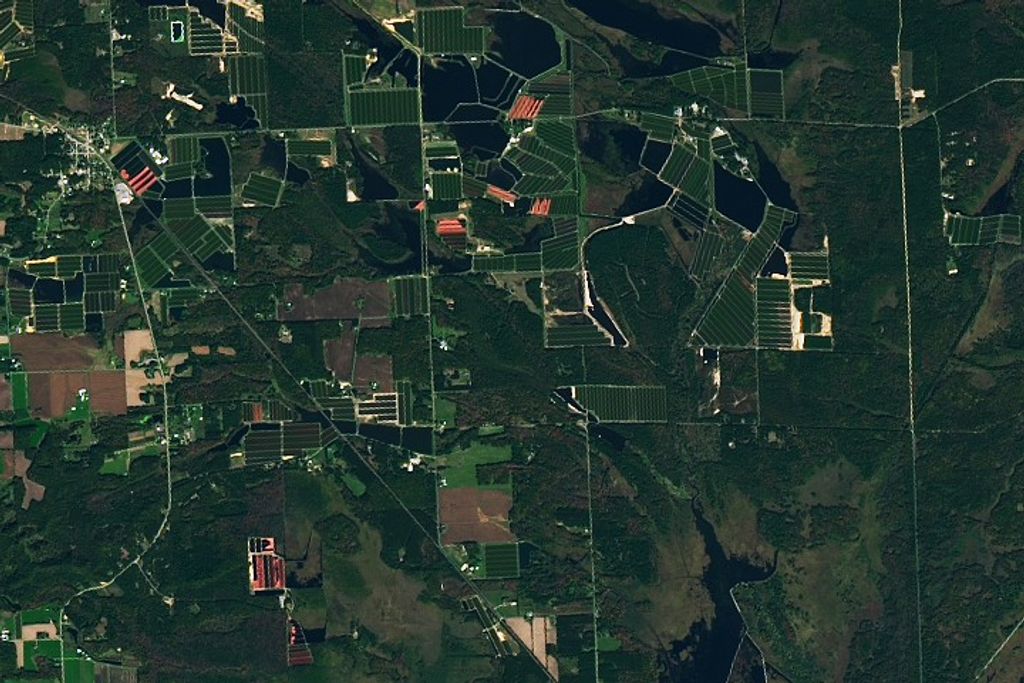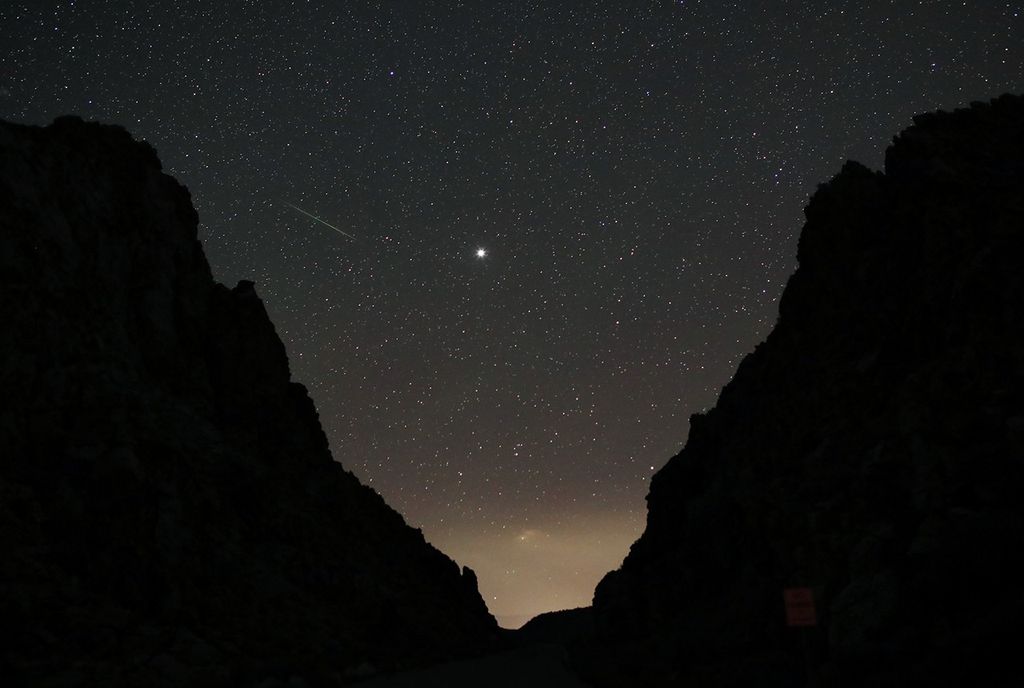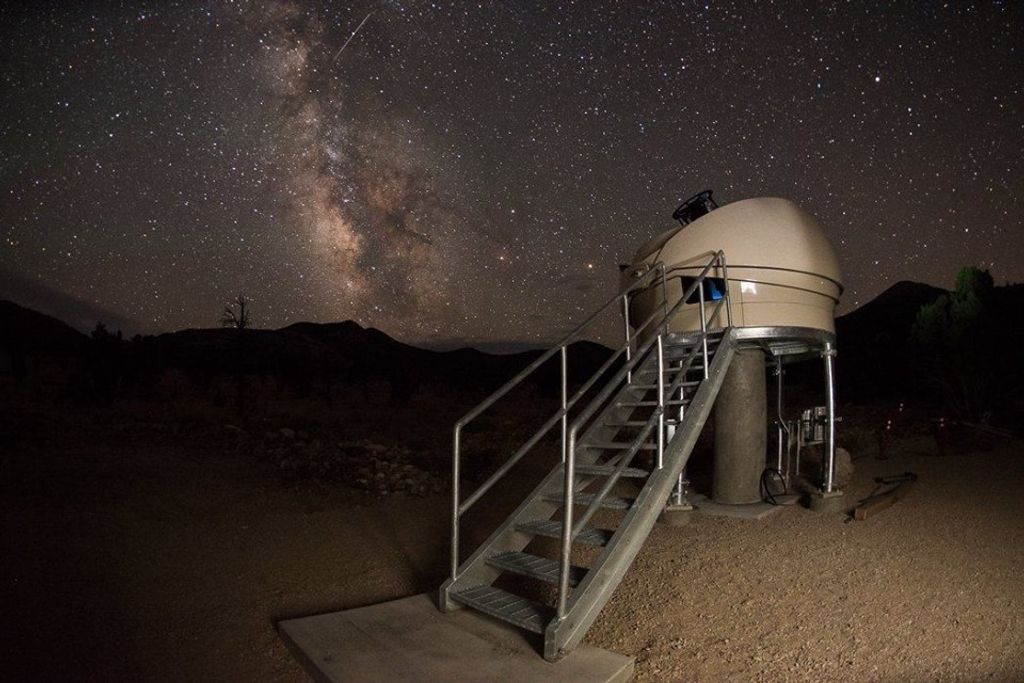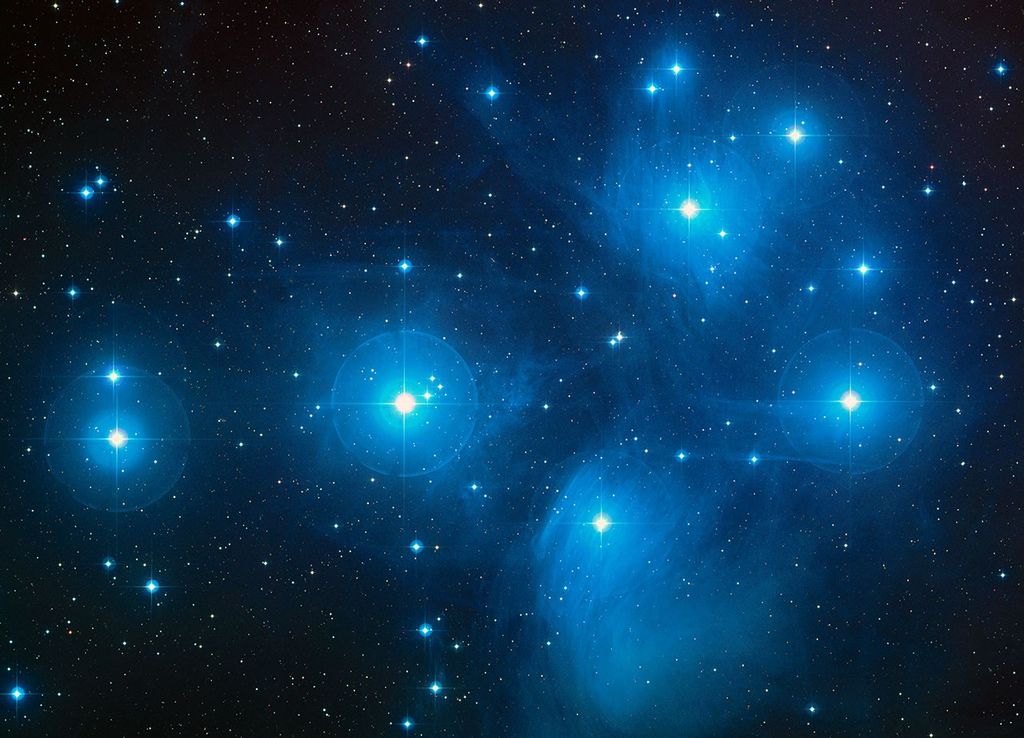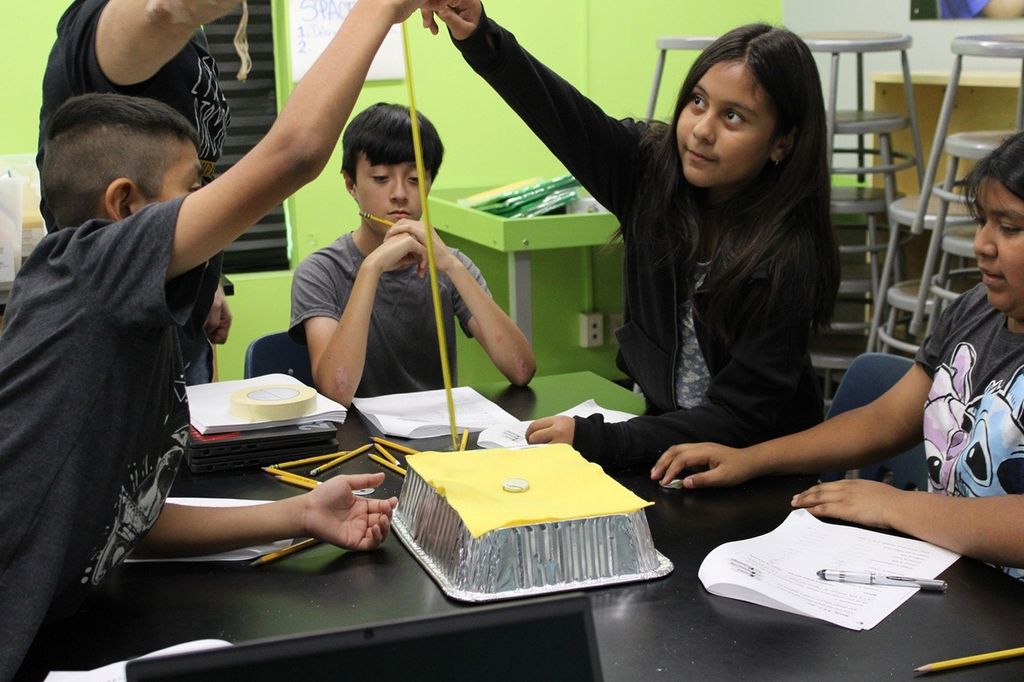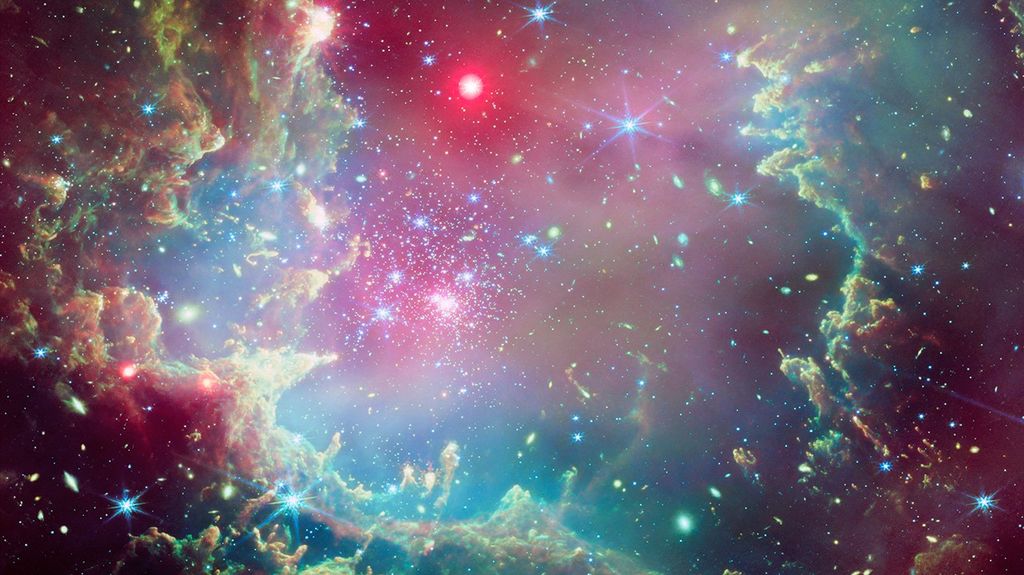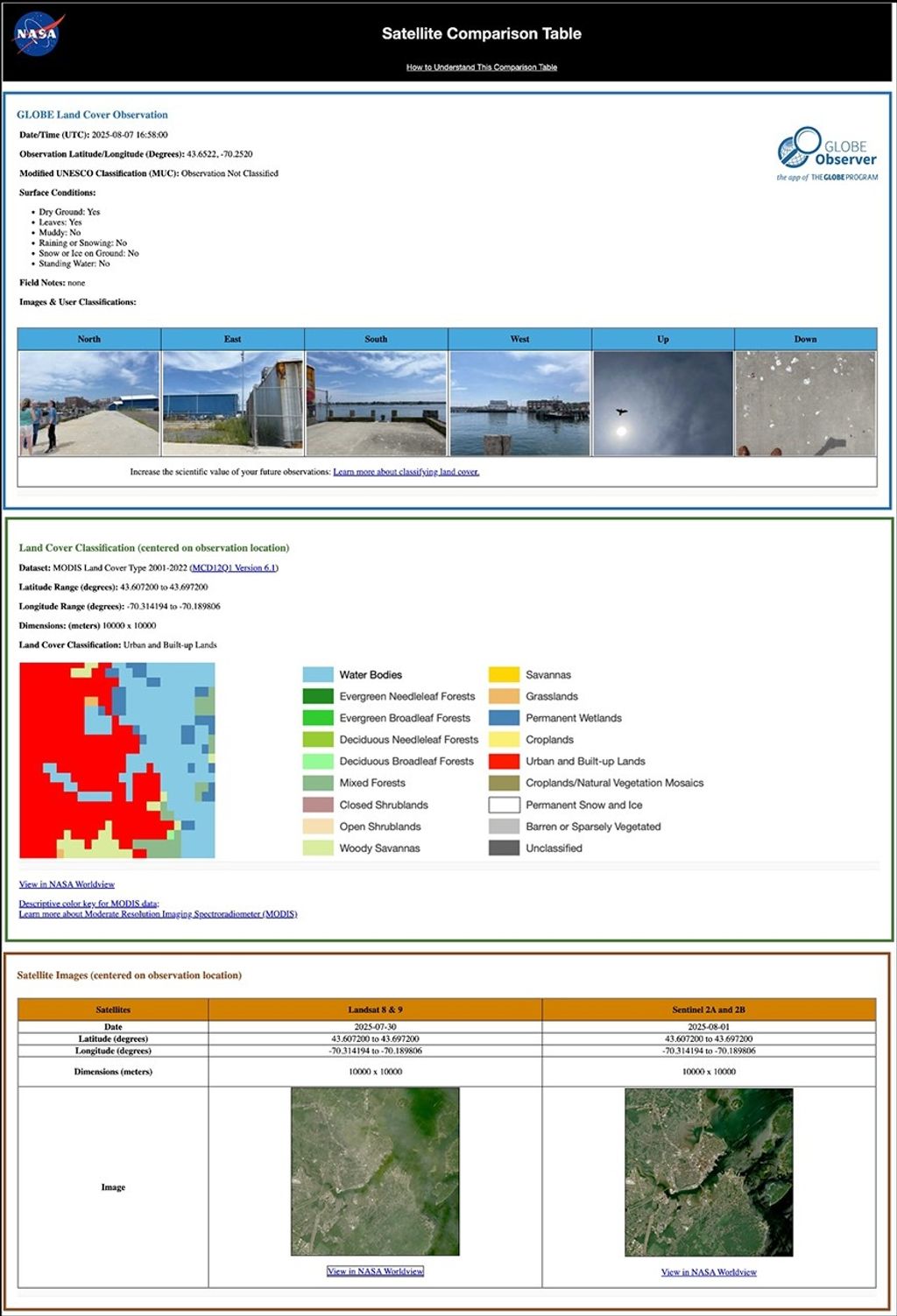1 min read
Iridescent Glory of Nearby Helix Nebula

In one of the largest and most detailed celestial images ever made, the coil-shaped Helix Nebula is being unveiled tomorrow in celebration of Astronomy Day (Saturday, May 10).
The composite picture is a seamless blend of ultra-sharp NASA Hubble Space Telescope (HST) images combined with the wide view of the Mosaic Camera on the National Science Foundation's 0.9-meter telescope at Kitt Peak National Observatory, part of the National Optical Astronomy Observatory, near Tucson, Ariz. Astronomers at the Space Telescope Science Institute assembled these images into a mosaic. The mosaic was then blended with a wider photograph taken by the Mosaic Camera. The image shows a fine web of filamentary "bicycle-spoke" features embedded in the colorful red and blue gas ring, which is one of the nearest planetary nebulae to Earth.
Because the nebula is nearby, it appears as nearly one-half the diameter of the full Moon. This required HST astronomers to take several exposures with the Advanced Camera for Surveys to capture most of the Helix. HST views were then blended with a wider photo taken by the Mosaic Camera. The portrait offers a dizzying look down what is actually a trillion-mile-long tunnel of glowing gases. The fluorescing tube is pointed nearly directly at Earth, so it looks more like a bubble than a cylinder. A forest of thousands of comet-like filaments, embedded along the inner rim of the nebula, points back toward the central star, which is a small, super-hot white dwarf.
The tentacles formed when a hot "stellar wind" of gas plowed into colder shells of dust and gas ejected previously by the doomed star. Ground-based telescopes have seen these comet-like filaments for decades, but never before in such detail. The filaments may actually lie in a disk encircling the hot star, like a collar. The radiant tie-die colors correspond to glowing oxygen (blue) and hydrogen and nitrogen (red).
Valuable Hubble observing time became available during the November 2002 Leonid meteor storm. To protect the spacecraft, including HST's precise mirror, controllers turned the aft end into the direction of the meteor stream for about half a day. Fortunately, the Helix Nebula was almost exactly in the opposite direction of the meteor stream, so Hubble used nine orbits to photograph the nebula while it waited out the storm. To capture the sprawling nebula, Hubble had to take nine separate snapshots.
Planetary nebulae like the Helix are sculpted late in a Sun-like star's life by a torrential gush of gases escaping from the dying star. They have nothing to do with planet formation, but got their name because they look like planetary disks when viewed through a small telescope. With higher magnification, the classic "donut-hole" in the middle of a planetary nebula can be resolved. Based on the nebula's distance of 650 light-years, its angular size corresponds to a huge ring with a diameter of nearly 3 light-years. That's approximately three-quarters of the distance between our Sun and the nearest star.
The Helix Nebula is a popular target of amateur astronomers and can be seen with binoculars as a ghostly, greenish cloud in the constellation Aquarius. Larger amateur telescopes can resolve the ring-shaped nebula, but only the largest ground-based telescopes can resolve the radial streaks. After careful analysis, astronomers concluded the nebula really isn't a bubble, but is a cylinder that happens to be pointed toward Earth.
About the Object
- R.A. PositionR.A. PositionRight ascension – analogous to longitude – is one component of an object's position.22h 29m 48.19s
- Dec. PositionDec. PositionDeclination – analogous to latitude – is one component of an object's position.-20° 49' 25.99"
- ConstellationConstellationOne of 88 recognized regions of the celestial sphere in which the object appears.Aquarius
- DistanceDistanceThe physical distance from Earth to the astronomical object. Distances within our solar system are usually measured in Astronomical Units (AU). Distances between stars are usually measured in light-years. Interstellar distances can also be measured in parsecs.About 650 light-years (200 parsecs)
- DimensionsDimensionsThe physical size of the object or the apparent angle it subtends on the sky.The image is roughly 27 arcminutes (5.1 light-years or 1.6 parsecs) across.
About the Data
- Data DescriptionData DescriptionProposal: A description of the observations, their scientific justification, and the links to the data available in the science archive.
Science Team: The astronomers who planned the observations and analyzed the data. "PI" refers to the Principal Investigator.Hubble data have been superimposed onto ground-based data taken by Travis Rector (NRAO) at the 0.9 meter telescope located on Kitt Peak, Tucson, AZ (NOAO/AURA/NSF). The HST data are from proposal 9700. Processed images may be obtained from the Helix MAST web site. The Hubble Helix Team includes: M. Meixner, H.E. Bond, G. Chapman (STScI), Y.-H. Chu (U. Illinois, Urbana-Champaign), P. Cox (Institut d'Astrophysique Spatiale, France), W. Crothers, L.M. Frattare, R.Gilliland (STScI), M. Guerrero R. Gruendl (U. Illinois, Urbana-Champaign), F. Hamilton, (STScI), R.Hook (STScI/ESO), P. Huggins (New York Univ.), I. Jordan, C.D. Keyes, A. Koekemoer (STScI), K.Kwitter (Williams College), Z.G. Levay, P.R. McCullough, M. Mutchler, K. Noll (STScI), C.R. O'Dell (Vanderbilt Univ.), N. Panagia, M. Reinhart, M. Robberto, K. Sahu, D. Soderblom, L. Stanghellini, C. Tyler, J. Valenti, A. Welty, R. Williams (STScI). - InstrumentInstrumentThe science instrument used to produce the data.HST>ACS/WFC, and KPNO 0.9m>Mosaic I
- Exposure DatesExposure DatesThe date(s) that the telescope made its observations and the total exposure time.November 19, 2002, Exposure time: 4.5 hours (HST) and November 3, 2001, Exposure time: 25 minutes (KPNO)
- FiltersFiltersThe camera filters that were used in the science observations.ACS/WFC: F502N ([O III]) and F658N (H alpha) Mosaic I: k1009 (H alpha) and k1014 ([O III])
- Object NameObject NameA name or catalog number that astronomers use to identify an astronomical object.Helix Nebula, NGC 7293
- Object DescriptionObject DescriptionThe type of astronomical object.Planetary Nebula
- Release DateMay 9, 2003
- Science ReleaseIridescent Glory of Nearby Planetary Nebula Showcased on Astronomy Day
- Credit

Related Images & Videos

Comet-like Filaments Along the Inner Rim of the Helix Nebula's Gas Ring
This cropped version of the Helix Nebula mosaic shows cometary-filaments embedded along a portion of the inner rim of the nebula's red and blue gas ring. At a distance of 650 light-years, the Helix is one of the nearest planetary nebulae to Earth. The composite picture is a...
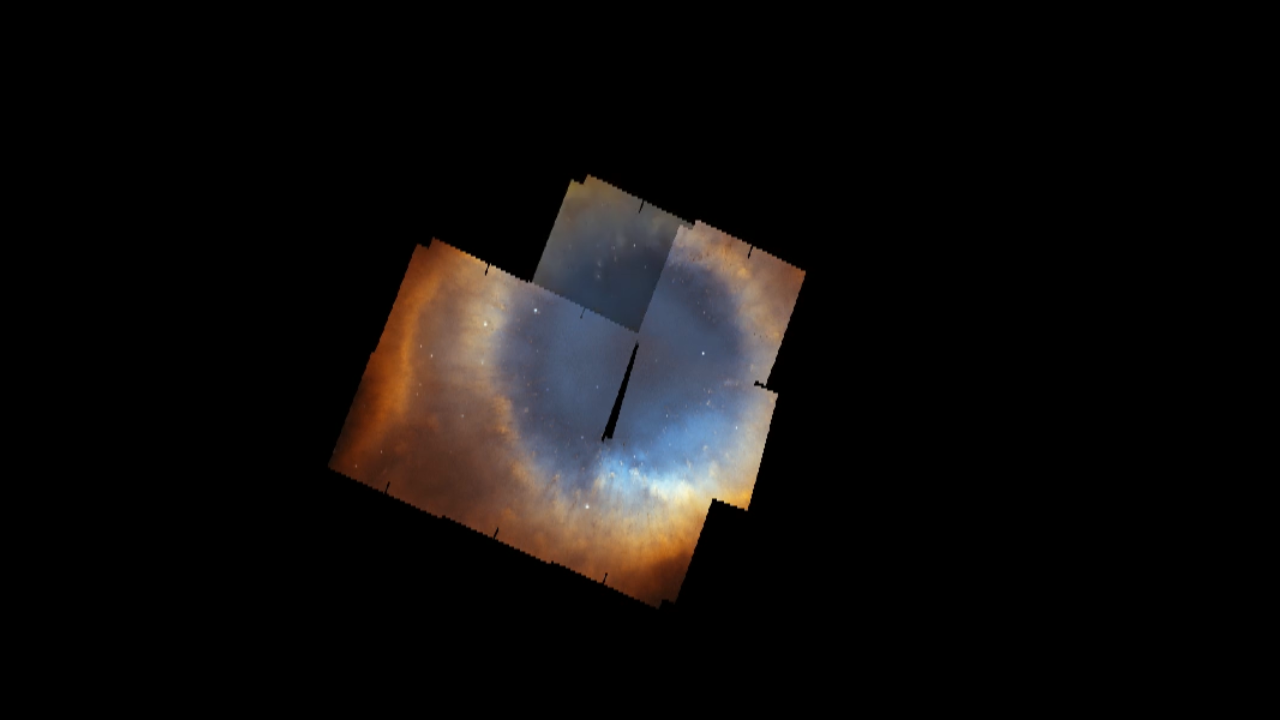
Constructing the Helix Nebula Mosaic
A mosaic tile build up of the nine images of the Helix Nebula taken by Hubble's Advanced Camera for Surveys. The resulting composite picture is a seamless blend of the ultra-sharp NASA Hubble Space Telescope images combined with the wider view of the Mosaic Camera on the...
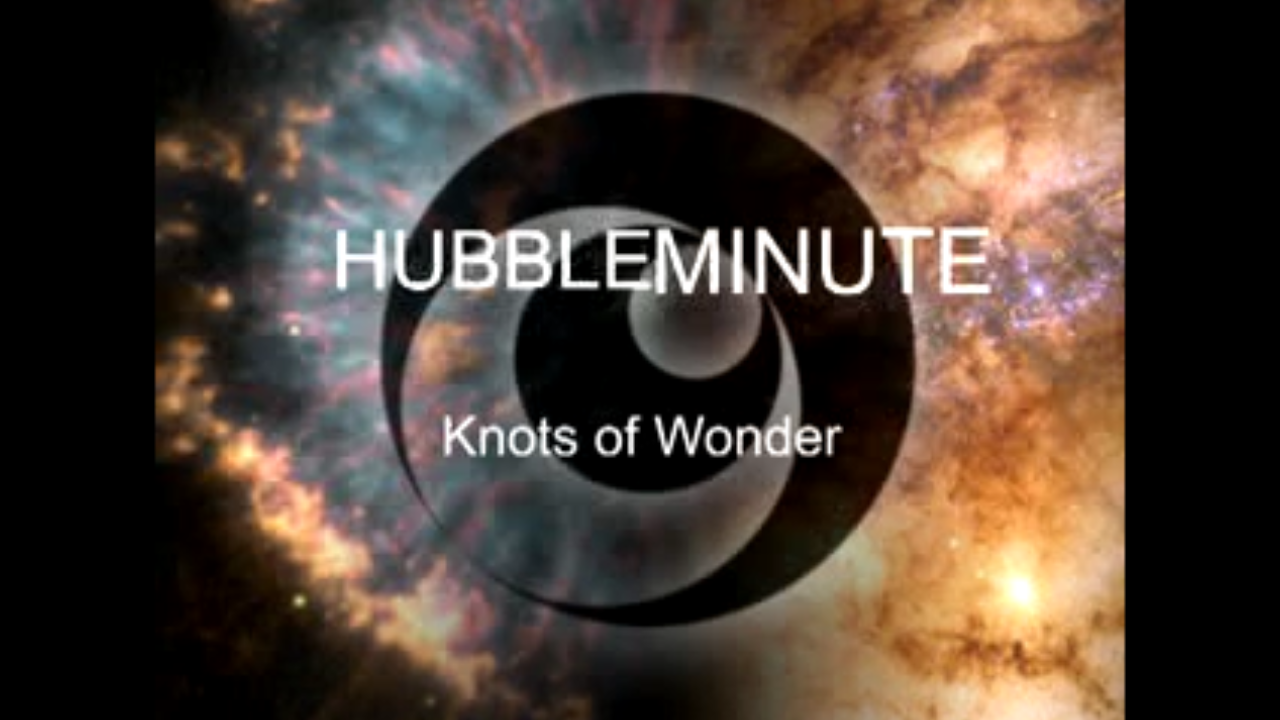
HubbleMinute: Helix Nebula
A HubbleMinute on the Helix Nebula titled "Knots of Wonder". This video was created for the Astronomy Day unveiling of the Hubble's Advanced Camera for Surveys nine mosaic images that were blended with a NOAO National Science Foundation's 0.9-meter image of the Helix Nebula. It...
Share
Details
Claire Andreoli
NASA’s Goddard Space Flight Center
Greenbelt, Maryland
claire.andreoli@nasa.gov

